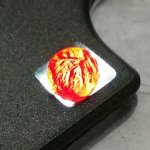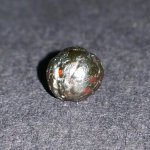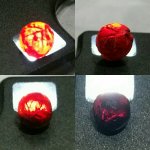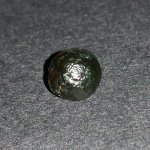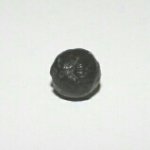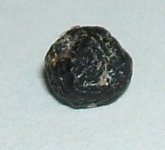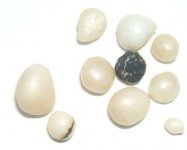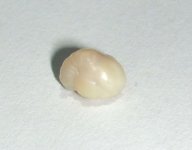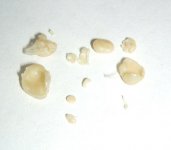I hope Dave will weigh in on this one! Fascinating for sure!
Dimensions aside and viewing small images, I have little information.
Pearls may pass light and attain metallic appearances on the surfaces. Likewise, the prune-like texture of the surface has also been observed in pearls.
If it were a pearl, I'd doubt it's origin to be Tridacna species nor any heterodonta subclass (toothed venus clams). Those tend to be highly prismatic and calcareous, hence largely opaque. Highly nacreous examples of T. gigas very often present with snow white prismatic structures, clear aragonitic surfaces and chatoyant eye-like patterns.
I'd also doubt it's pallial or extrapallial in onset. Meaning not borne of the mantle, but of another part of the mollusks anatomy. Perhaps the byssal gland or visceral mass (aka stomach or digestive tract). I've attached a couple of examples from my collection. The dark pieces are proteinaceous pearls taken from the byssal glands of mussels. When these are first observed,
they are beige then turn dark once dried. The shape is identical. These also pass light, but gold/brown. Most venus clams depend upon byssus only near metamorphosis and pearls forming within those glands is rare. Likewise, mussels or pinna are highly dependent upon the use of byssus to maintain a fast hold during their entire lives.
Therefore, if it is a pearl, it's likely pen shell or horse mussel.
Testing this pearl would require some destruction to observe the structure under microscopy.

